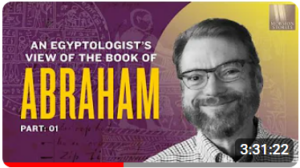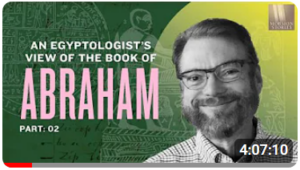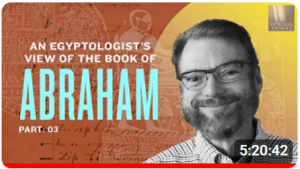
I often reflect upon how mormonism gained a footing and grew into the multi-billion dollar real estate holding company it is today. Mormons would point to the church’s resiliency and growth as evidence of its truthfulness and divine endorsement. Yet that argument is instantly undermined when compared to the Roman Catholic Church or Islam, both of which have weathered the angry storms of human history for millenia, and retain membership in the billions.
But what stands out to me are the moments in mormon church history which expose Joseph Smith for the con man he truly was. He did not set out to create a massively wealthy church. He started out swindling people looking for treasure. Hooking up with a few more religiously literate folk (like Cowdery), his brand as a Prophet of God™ was born. Most of his actions from then onward are more RE-actions to protect his brand, and to consolidate his control over his band of followers.
At first, one of his early prophecies said that translating the Book of Mormon would be his only gift. Years later, when that task was complete and his authority was being challenged, he literally edited that prophecy to read that translating the book was only his first gift.
| Book of Commandments – 1829 | Doctrine & Covenants – 1835 |
|---|---|
| “…and he has a gift to translate the book, and I have commanded him that he shall pretend to no other gift, for I will grant him no other gift.“ | “And you have a gift to translate the plates; and this is the first gift that I bestowed upon you; and I have commanded that you should pretend to no other gift, until my purpose is fulfilled in this; for I will grant unto you no other gift until it is finished.“ |
| – Book of Commandments 1829, Chapter 4, Verse 2 (emphasis added). | – Doctrine and Covenants 1835, Section 5, Verse 4, (emphasis added). |
Why is this a big deal? Supposedly the text of Doctrine & Covenants was a book of the direct words of God to Joseph. Yet over the years there have been numerous edits, sometimes adding pages of text to the original so-called revelation. When you look at the changes, they are opportunistic at best. In this case, he needed to edit his divine calling to be more than just the production of the Book of Mormon (which was completed by this time). He needed additional divine reinforcement, and so the textual gaslighting happened. Lots.
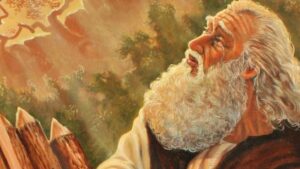 Another example of convenient revelations: when other church leaders started questioning Joseph’s authority and divine influence, Joseph coincidentally trotted out his First Vision and was like “Hey guys, I like totally forgot to mention this, but um, like a decade ago? I totally had a vision from God where he made me a prophet, so like, that means I’m in charge, and you guys have to listen to me.” His claim is unfortunately undermined by the fact that The First Vision was unheard of until 12 years after the event was claimed to have occurred. He claimed it happened in 1820, yet the first account of this vision did not show up until 1832. Before then, no one had heard anything about this supposed world-shattering event. Not a peep.
Another example of convenient revelations: when other church leaders started questioning Joseph’s authority and divine influence, Joseph coincidentally trotted out his First Vision and was like “Hey guys, I like totally forgot to mention this, but um, like a decade ago? I totally had a vision from God where he made me a prophet, so like, that means I’m in charge, and you guys have to listen to me.” His claim is unfortunately undermined by the fact that The First Vision was unheard of until 12 years after the event was claimed to have occurred. He claimed it happened in 1820, yet the first account of this vision did not show up until 1832. Before then, no one had heard anything about this supposed world-shattering event. Not a peep.
The 1832 version of the vision contained differences which were doctrinally problematic to the church’s truth claims, so much so that later church prophet Joseph Fielding Smith tore pages out of Joseph Smith’s journal to hide the vision.
Not surprisingly, there are multiple contradictory versions of this First Vision. There are so many instances in the official church history, where in response to someone challenging him, or arguing with him, Joseph would throw his magic rock in his hat and start spewing forth an amazing (yet totally coincidental he swears) revelation that would reinforce and re-establish Joseph’s power.
I noticed those moments in church history. Those tells. Those moments that gave away that he was opportunistically making it up as he went. Looking at The Book of Abraham (BoA), it is filled with moments that give Joseph away as the charlatan he was.
The Con I Should Have Seen Coming A Mile Away
Joseph Smith Was:
- A smooth talking manipulator.
- Involved in several fraudulent works.
- Using grandiose-sounding religious and ancient-sounding jargon to describe the origins of the scrolls and content.
- Claiming he could magically translate ancient languages using his magic rock.
- Charging money for people to see the ancient scrolls.
- Translating into King James style English instead of 19th century English.
The Book of Abraham Contains:
- Anachronisms of language, objects & concepts.
- Textual and grammatical errors.
- Egyptian facsimiles which have been altered amateurishly and contain errors and incorrect symbology.
- A completely contradictory translation to that which modern Egyptologists have determined is the correct translation.
- Rampant racism.
- Incorrect astronomy concepts.
We Have the Original Papyri
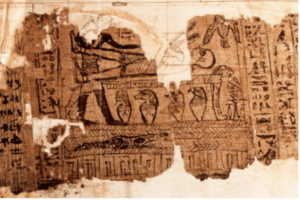 The biggest problem for the church on this issue, is that the papyrus scrolls still exist, and using modern Egyptology, are easily translated. We can read what they say, and they have absolutely nothing to do with Abraham. It does not mention Abraham, his life, his teachings, or anything about him.
The biggest problem for the church on this issue, is that the papyrus scrolls still exist, and using modern Egyptology, are easily translated. We can read what they say, and they have absolutely nothing to do with Abraham. It does not mention Abraham, his life, his teachings, or anything about him.
The scrolls are from an ancient Egyptian Book of Breathings (or book of the dead) for a plain ordinary man named Hor. We can read his name on the scrolls and drawings. Books of Breathings are not unusual and follow a typical form and layout, which the facsimiles published as being from the BoA clearly follow.
Not one single word from the papyri matches the text of the Book of Abraham. Let me say it again so it sinks in. Not one single word from the papyri matches the text of the Book of Abraham. The papyri even dates to 150 BC, about 1500 years after the supposed time of Abraham.
How can that be, you ask? Surely it should miraculously match! Since the scrolls were truly written by Abraham himself, and we have the text of the BoA, surely it should match word-for-word?
But it doesn’t. None of it matches.
In fact, there is nothing actually extraordinary about the content of the scrolls. It is a simple depiction of Hor’s journey to the afterlife surrounded by Egyptian deity and ceremony. At the time of Joseph Smith, scholars were typically unable to translate Egyptian, although artifacts like the Rosetta Stone had been discovered which furthered the science along. But in the 1830s, the meaning of hieroglyphics was still generally a mystery, which allowed Joseph to invent a translation. One that was to his advantage. One that lent more credibility to his prophetic authority and abilities. And unfortunately, a translation literally riddled with textual errors, anachronisms, racism, and ridiculous astronomy.’
I give my critical analysis of the Book of Abraham below, but the best critique available is Egyptologist Dr. Robert Ritner’s 3-Part Video Series for Mormon Stories podcast: Part 1 | Part 2 | Part 3
Issues with the Text of the Book of Abraham
Smith’s translation of the text from the papyri is perhaps the most obvious fraud. It does not mention Abraham, his journeys, or the theological discourses presented in Smith’s work. This stark contrast has led to widespread criticism of the translation’s authenticity and accuracy.
The Source Papyri
 Joseph Smith claimed to have translated the Book of Abraham from ancient Egyptian papyri. Modern scholars have identified these papyri fragments as parts of the “Book of Breathings” (or “Breathing Permit of Hôr”), a funerary text meant to ensure safe passage to the afterlife for the deceased. This text is unrelated to the narrative of Abraham, and its content does not match any part of Smith’s translation. For example, where Smith’s Book of Abraham speaks of Abraham’s vision and journey, the “Book of Breathings” discusses rituals and spells for the deceased.
Joseph Smith claimed to have translated the Book of Abraham from ancient Egyptian papyri. Modern scholars have identified these papyri fragments as parts of the “Book of Breathings” (or “Breathing Permit of Hôr”), a funerary text meant to ensure safe passage to the afterlife for the deceased. This text is unrelated to the narrative of Abraham, and its content does not match any part of Smith’s translation. For example, where Smith’s Book of Abraham speaks of Abraham’s vision and journey, the “Book of Breathings” discusses rituals and spells for the deceased.
Specific Translations
In the Book of Abraham, Joseph Smith translates certain Egyptian names and phrases with meanings that do not align with their actual Egyptian counterparts. For instance, the name “Chaldea” is used frequently, but Egyptologists note that the Egyptian papyri make no reference to Chaldea, an ancient region in Mesopotamia, suggesting an anachronism and geographical error.
Smith translates an Egyptian phrase in Abraham 1:13 as “Shinehah, which is the sun.” However, Egyptologists have found no evidence to support this translation, and the characters in the papyri do not correspond to any known Egyptian terms for the sun.
Cosmology and Astronomy
In Abraham 3, Joseph Smith provides a detailed cosmology, including references to the star Kolob. Smith describes Kolob as the nearest star to the throne of God and introduces a system of astronomy that does not align with any known ancient Egyptian astronomical texts. Egyptologists have found no references to Kolob or the astronomical concepts described by Smith in any Egyptian documents, suggesting that these elements were not derived from the papyri.
These examples demonstrate the substantial discrepancies between Joseph Smith’s translation and the actual content and context of the ancient Egyptian papyri. These issues raise significant questions about the authenticity and accuracy of the Book of Abraham as a historical and religious document.
Issues with the Book of Abraham Facsimiles
The Book of Abraham has faced significant criticism regarding the translation of both its text and the accompanying facsimiles. Here are some specific examples highlighting these issues:
Facsimile 1
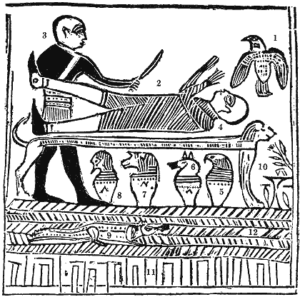 Joseph Smith’s interpretation of Facsimile 1 depicts it as a scene of Abraham being sacrificed by an idolatrous priest.
Joseph Smith’s interpretation of Facsimile 1 depicts it as a scene of Abraham being sacrificed by an idolatrous priest.
However, Egyptologists identify this illustration as a standard funerary scene known as a “lion couch” scene, commonly found in Egyptian burial texts.
The figures in the scene, including Anubis and Osiris, are misidentified by Smith. For instance, the figure Smith labels as a priest holding a knife is identified by experts as the god Anubis, typically involved in the embalming process.
Facsimile 2
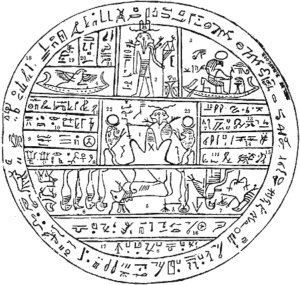 This hypocephalus, a circular Egyptian funerary amulet, is interpreted by Smith as containing astronomical knowledge revealed to Abraham.
This hypocephalus, a circular Egyptian funerary amulet, is interpreted by Smith as containing astronomical knowledge revealed to Abraham.
Egyptologists, however, understand it as a depiction of the deceased’s journey through the afterlife and their union with the sun god Ra.
For example, Smith’s interpretation of the central figure as “Kolob,” a star near God’s throne, has no basis in Egyptian cosmology, where the figure represents the god Osiris or the solar disk.
Facsimile 3
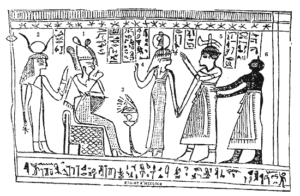 Smith describes this scene as Abraham sitting on Pharaoh’s throne, teaching principles of astronomy in Pharaoh’s court. Egyptologists recognize this as a standard depiction of the deceased being presented before Osiris in the afterlife, with figures representing gods and goddesses such as Isis, Osiris, and Maat.
Smith describes this scene as Abraham sitting on Pharaoh’s throne, teaching principles of astronomy in Pharaoh’s court. Egyptologists recognize this as a standard depiction of the deceased being presented before Osiris in the afterlife, with figures representing gods and goddesses such as Isis, Osiris, and Maat.
Smith’s identification of these figures and their roles significantly diverges from established Egyptian iconography and religious texts.
These specific examples illustrate the profound discrepancies between Joseph Smith’s interpretations and the established understandings of Egyptologists, thereby casting doubt on the validity of the Book of Abraham’s origins and translation.
Anachronisms in the Book of Abraham
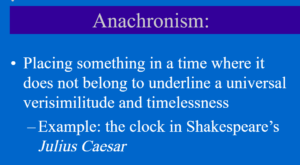 The Book of Abraham includes details that are historically and culturally inconsistent with the period it purports to describe. For example, it mentions “the plain of Olishem” (Abraham 1:10) and “Potiphar’s Hill” (Abraham 1:20), places and names that do not correspond to any known locations or names from the time of Abraham or in the context of ancient Egyptian or Mesopotamian geography and history.
The Book of Abraham includes details that are historically and culturally inconsistent with the period it purports to describe. For example, it mentions “the plain of Olishem” (Abraham 1:10) and “Potiphar’s Hill” (Abraham 1:20), places and names that do not correspond to any known locations or names from the time of Abraham or in the context of ancient Egyptian or Mesopotamian geography and history.
Chaldeans
The Book of Abraham mentions the “Chaldeans” in Abraham 1:1, describing them as a group of people who sought to take Abraham’s life. However, historical and archaeological evidence indicates that the Chaldeans were a later Semitic group associated with the Neo-Babylonian Empire, which emerged centuries after the time of Abraham. The use of “Chaldeans” in the Book of Abraham is anachronistic and reflects a misunderstanding of ancient Near Eastern history.
Ur of the Chaldees
Abraham is said to have originated from “Ur of the Chaldees” (Abraham 1:20), which is consistent with the biblical account in Genesis. However, the term “Chaldees” is again anachronistic, as the Chaldeans did not gain prominence in the region until much later. The city of Ur was indeed a significant Sumerian city during Abraham’s time, but there is no evidence to suggest it was associated with the Chaldeans at that time.
Egyptus
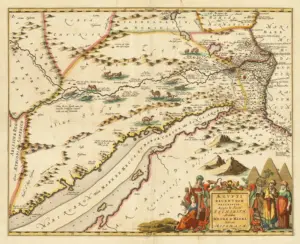 The mention of “Egyptus” in the Book of Abraham presents challenges to its historical authenticity due to its anachronistic nature and inconsistency with established historical and archaeological knowledge. This discrepancy contributes to broader questions about the origins and reliability of the Book of Abraham as a scriptural and historical text.
The mention of “Egyptus” in the Book of Abraham presents challenges to its historical authenticity due to its anachronistic nature and inconsistency with established historical and archaeological knowledge. This discrepancy contributes to broader questions about the origins and reliability of the Book of Abraham as a scriptural and historical text.
- The concept of Egyptus as the progenitor of the Egyptians is anachronistic, as it conflicts with established historical and archaeological knowledge. The origins of ancient Egypt are complex and involve migrations and settlements by various peoples over millennia. The idea of a single progenitor founding the Egyptian civilization does not align with current scholarly understanding.
- Apologists may interpret the mention of Egyptus as symbolic rather than literal, suggesting that it represents the founding myth or cultural memory of the Egyptian people rather than a historical figure. However, critics argue that such symbolic interpretations do not alleviate the anachronistic nature of the narrative or its implications for the Book of Abraham’s historical authenticity.
- The name “Egyptus” itself appears to be derived from the Greek “Aigyptos,” which was used to refer to Egypt in classical antiquity. This raises questions about the linguistic and cultural context of the narrative, as it seems to reflect a later Hellenistic influence rather than an authentic ancient Egyptian perspective.
- The inclusion of Egyptus in the Book of Abraham adds to the list of anachronisms and historical inaccuracies found within the text. Critics argue that such discrepancies undermine the claim of the Book of Abraham being a genuine ancient document and raise doubts about Joseph Smith’s ability to accurately translate ancient records.
The mention of Egyptus in the Book of Abraham presents challenges to its historical authenticity due to its anachronistic nature and inconsistency with established historical and archaeological knowledge. This discrepancy contributes to broader questions about the origins and reliability of the Book of Abraham as a scriptural and historical text.
Pharoah
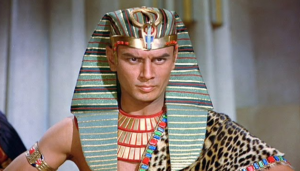 The presence of the term “Pharaoh” in the Book of Abraham is especially problematic concerning its historical accuracy and potential anachronism. Here’s an overview of the issue:
The presence of the term “Pharaoh” in the Book of Abraham is especially problematic concerning its historical accuracy and potential anachronism. Here’s an overview of the issue:
- Reference in the Book of Abraham: The Book of Abraham frequently mentions “Pharaoh,” referring to rulers in ancient Egypt. For example, in Abraham 1:20-26, Pharaoh is described as a descendant of Ham who seeks to take Abraham’s life.
- Anachronistic Nature: The use of the term “Pharaoh” in the Book of Abraham poses an anachronism, as it reflects a later period of Egyptian history than the time of Abraham. The title “Pharaoh” was not commonly used to refer to Egyptian rulers until the New Kingdom period, which began around the 16th century BCE, long after the traditional dating of Abraham.
- Historical Context: In ancient Egypt, the term “Pharaoh” originally referred to the royal palace or residence of the king rather than to the king himself. It later became a title for the king during the New Kingdom period. However, the Book of Abraham uses “Pharaoh” as a personal title for rulers during Abraham’s time, which does not align with historical usage.
- Interpretive Challenges: Apologists may interpret the use of “Pharaoh” in the Book of Abraham as an anachronistic translation convention or as a broader title referring to rulership rather than a specific historical term. However, critics argue that such interpretations do not fully address the anachronistic nature of the term within the context of ancient Egypt.
- Implications for Authenticity: The inclusion of “Pharaoh” in the Book of Abraham adds to the list of anachronisms and historical inaccuracies found within the text. Critics contend that such discrepancies undermine the claim of the Book of Abraham being a genuine ancient document and raise doubts about Joseph Smith’s ability to accurately translate ancient records.
The use of “Pharaoh” in the Book of Abraham presents challenges to its historical authenticity due to its anachronistic nature and inconsistency with established historical and archaeological knowledge. This discrepancy contributes to broader questions about the origins and reliability of the Book of Abraham as a scriptural and historical text.
Idolatry
The Book of Abraham portrays Abraham’s family as practicing idolatry before his conversion to monotheism. While idolatry was indeed prevalent in ancient societies, the specific details described in the text, such as the use of “images for the worship of gods” (Abraham 1:7), may reflect a later Christian understanding of idolatry rather than accurately depicting the religious practices of Abraham’s time.
Astronomical Concepts
Abraham 3 contains elaborate descriptions of astronomy and cosmology, including references to planets, stars, and a hierarchical universe. However, the astronomical concepts described in the text align more closely with early modern understandings rather than ancient Near Eastern cosmology. For example, the concept of “Kolob” as the nearest star to God’s throne has no basis in ancient astronomy and reflects a later Christian theological interpretation.
These anachronisms raise doubts about the historical accuracy and authenticity of the Book of Abraham as a genuine ancient document. Critics argue that these anachronisms suggest that the text was composed in the 19th century rather than being a translation of ancient records, as claimed by Joseph Smith.
King James Bible Verses in the Book of Abraham
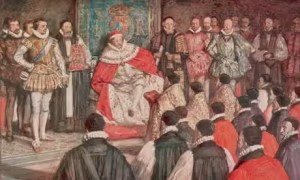 The linguistic style of the Book of Abraham exhibits similarities to the King James Version of the Bible, including archaic language and syntax. While this may reflect Joseph Smith’s cultural and linguistic background, it is anachronistic in the context of ancient Egypt or Mesopotamia, where the text is purported to originate. The presence of King James Bible (KJV) verses within the Book of Abraham has been a point of critical discussion, raising questions about its origins and authenticity. Here are several aspects of this issue:
The linguistic style of the Book of Abraham exhibits similarities to the King James Version of the Bible, including archaic language and syntax. While this may reflect Joseph Smith’s cultural and linguistic background, it is anachronistic in the context of ancient Egypt or Mesopotamia, where the text is purported to originate. The presence of King James Bible (KJV) verses within the Book of Abraham has been a point of critical discussion, raising questions about its origins and authenticity. Here are several aspects of this issue:
Verbatim Phrases
The Book of Abraham includes passages that are nearly identical to those found in the KJV. For example, Abraham 2:6-7 parallels Genesis 12:1-3 closely, both in content and phrasing. Such direct similarities suggest that Joseph Smith may have used the KJV as a source or reference when composing the Book of Abraham, rather than producing a direct translation from ancient Egyptian texts.
Translation Anachronisms
The inclusion of KJV language is anachronistic given the purported ancient origins of the Book of Abraham. The KJV was first published in 1611, long after the time of Abraham. If the text were genuinely ancient, it would be expected to differ significantly from a 17th-century English translation of the Bible. The presence of KJV verses implies that the Book of Abraham was influenced by this later text.
Linguistic Style
The linguistic style of the Book of Abraham mirrors the early modern English used in the KJV. This stylistic choice is notable because an authentic ancient document would not naturally exhibit the language characteristics of a much later English translation. The replication of KJV phraseology and syntax suggests a borrowing or adaptation from the Bible, rather than a unique, ancient source.
Revelation vs. Translation
Apologists might argue that the use of KJV language is consistent with the idea that Joseph Smith received the text of the Book of Abraham by revelation. From this perspective, the divine inspiration would naturally employ the language familiar to Smith, which was the KJV. Critics, however, argue that this undermines the claim of the Book of Abraham being a direct translation of ancient records, as it relies heavily on a much later and contextually different source.
Implications for Authenticity
The critical perspective holds that the presence of KJV verses within the Book of Abraham raises significant doubts about its authenticity as an ancient document. Instead, it suggests that Joseph Smith composed the text in a manner influenced by the biblical sources available to him. This reliance on the KJV undermines the claim that the Book of Abraham was derived from ancient Egyptian papyri.
The presence of King James Bible verses in the Book of Abraham highlights significant concerns about its origins and translation claims. The verbatim borrowing from the KJV, anachronistic language, and stylistic parallels suggest that the text is a product of 19th-century religious context rather than a faithful translation of an ancient record. This critical perspective challenges the authenticity and historical validity of the Book of Abraham as a distinct and ancient scriptural work.
Racism in the Book of Abraham
The issue of racism in the Book of Abraham and other mormon scriptures has been a topic of considerable criticism and debate, particularly regarding its portrayal of race and lineage. Here are several key points regarding this issue:
Curse of Ham
 The Book of Abraham includes passages that have been interpreted as supporting the racist concept of the Curse of Ham, which was historically used to justify slavery and racial discrimination. In Abraham 1:21-27, the text describes a lineage curse placed upon the descendants of Canaan, a son of Ham, which is often interpreted in a racial context. This narrative has been used to perpetuate discriminatory attitudes toward people of African descent.
The Book of Abraham includes passages that have been interpreted as supporting the racist concept of the Curse of Ham, which was historically used to justify slavery and racial discrimination. In Abraham 1:21-27, the text describes a lineage curse placed upon the descendants of Canaan, a son of Ham, which is often interpreted in a racial context. This narrative has been used to perpetuate discriminatory attitudes toward people of African descent.
Hierarchy of Races
Some critics argue that the Book of Abraham reinforces a hierarchical view of races, with certain lineages being blessed and others cursed. This hierarchical model, which places some races above others based on perceived righteousness or lineage, has been used to justify racial inequality and discrimination throughout history. The idea of a divine curse upon certain races perpetuates harmful stereotypes and prejudices.
Lack of Correction
Unlike other scriptural texts in the LDS canon, the Book of Abraham does not contain any explicit correction or repudiation of racist beliefs or attitudes. While the LDS Church has disavowed past racist teachings, including those related to the Curse of Ham, the Book of Abraham remains a part of the canon without any official disclaimer regarding its potentially racist implications.
Interpretive Challenges
Apologists may argue that the passages in the Book of Abraham are open to interpretation and that the text should be understood in its historical and cultural context. They might contend that the concept of lineage curses should not be interpreted in a racial sense but rather in a spiritual or symbolic context. However, critics counter that regardless of interpretive nuances, the text has been used to perpetuate racist ideologies and attitudes.
Impact on Believers
The presence of potentially racist passages in the Book of Abraham can have a significant impact on believers, particularly those who belong to racial or ethnic groups that have been historically marginalized or discriminated against. Such passages may create cognitive dissonance for individuals who are committed to their faith while also rejecting racist beliefs and attitudes.
The issue of racism in the Book of Abraham raises important questions about the interpretation and impact of religious texts, as well as their implications for contemporary attitudes and beliefs. While interpretations may vary, it is essential to acknowledge and address the potential harm caused by passages that perpetuate discriminatory ideologies, regardless of their historical or cultural context.
Apologetic Argument: There Must Have Been Another Scroll
The apologetic claim that “there must have been another scroll” to explain the discrepancies between the Book of Abraham and the surviving papyri has been met with significant critical responses. Here are key points from these critiques:
Lack of Evidence
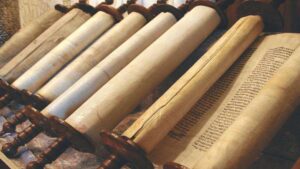 Critics argue that there is no historical or physical evidence to support the existence of another scroll that Joseph Smith used for his translation. The surviving papyri, which have been thoroughly analyzed, do not correspond to the content of the Book of Abraham.
Critics argue that there is no historical or physical evidence to support the existence of another scroll that Joseph Smith used for his translation. The surviving papyri, which have been thoroughly analyzed, do not correspond to the content of the Book of Abraham.
Egyptologists confirm that these fragments are portions of common funerary texts, specifically the “Book of Breathings,” and not a lost narrative about Abraham. The argument for an additional scroll is seen as speculative and unsupported by any direct evidence.
Matching Sequence of Hieroglyphics
One significant line of evidence that proves there was only one scroll is the matching sequence of hieroglyphics between the papyrus fragments and the “Kirtland Egyptian Papers” (KEP).
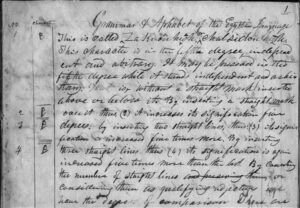 The Kirtland Egyptian Papers (KEP): These are a collection of documents produced by Joseph Smith and his associates in the early 1830s, which include attempts to decipher Egyptian hieroglyphics and translate them into English. These papers provide insights into Smith’s translation process for the Book of Abraham.
The Kirtland Egyptian Papers (KEP): These are a collection of documents produced by Joseph Smith and his associates in the early 1830s, which include attempts to decipher Egyptian hieroglyphics and translate them into English. These papers provide insights into Smith’s translation process for the Book of Abraham.
- Hieroglyphics and Translation: The hieroglyphics found on the surviving papyrus fragments have been identified and translated by modern Egyptologists as part of the “Book of Breathings,” an Egyptian funerary text. When comparing these hieroglyphics to those in the Kirtland Egyptian Papers, it becomes evident that Smith’s translations are directly linked to the characters on the papyri.
- Chronological Order: The sequence of hieroglyphics on the papyrus matches the order and context in which they appear in the Kirtland Egyptian Papers. For instance, specific characters and their supposed translations in the KEP align with corresponding sections of the “Book of Breathings” papyri, demonstrating that Smith and his associates were working from these very fragments.
- Translation Method: Joseph Smith’s translation method, as reflected in the KEP, shows an attempt to derive lengthy and complex English passages from single or small groups of Egyptian characters. This method has been widely criticized because the characters on the papyrus do not yield the English text of the Book of Abraham when translated by modern Egyptological standards.
- Implications of the Match: The matching hieroglyphics between the surviving papyri and the KEP strongly suggest that the surviving fragments are the same documents Smith used for his translation of the Book of Abraham. This challenges the apologetic claim that another, now-lost scroll was used, as the existing evidence indicates that the papyri Smith worked with are those we currently possess.
- Significance for Authenticity: The evidence that the surviving papyrus fragments are the same ones used by Smith calls into question the authenticity of the Book of Abraham as a translation of ancient scripture. This highlights significant issues in the translation claims made by Smith.
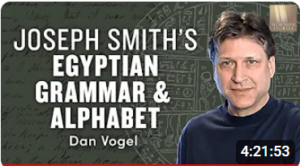 The hierarchical match between the surviving papyrus fragments and the Kirtland Egyptian Papers provides strong evidence that these are the same documents Joseph Smith used in his translation process. This evidence undermines claims of an additional, lost scroll and raises serious doubts about the authenticity and accuracy of the Book of Abraham as a translation of an ancient document.
The hierarchical match between the surviving papyrus fragments and the Kirtland Egyptian Papers provides strong evidence that these are the same documents Joseph Smith used in his translation process. This evidence undermines claims of an additional, lost scroll and raises serious doubts about the authenticity and accuracy of the Book of Abraham as a translation of an ancient document.
For a more detailed look into the Kirtland Egyptian Papers and associated grammar documents, Dan Vogel, Radio Free Mormon and Mormon Stories do a deep dive.
Eyewitness Accounts
Eyewitness accounts from the 19th century, including those from Joseph Smith’s contemporaries who handled and described the papyri, do not mention any separate or significantly different scroll that could contain the Book of Abraham’s narrative. For instance, descriptions by individuals like Oliver Cowdery and others involved in the early days of the LDS Church consistently refer to the same papyri that are now identified as the “Book of Breathings” texts.
Content and Context
Critics point out that the content and context of the papyri match the descriptions of the documents from which Joseph Smith claimed to have translated. The themes, illustrations, and hieratic text on the surviving papyri align with ancient Egyptian funerary practices and not with the biblical or historical context of Abraham. This undermines the assertion that a different scroll with entirely different content was present but has since been lost.
Translation Methodology
The methodology used by Joseph Smith for his translations has also been called into question. Critics note that Smith’s “translations” of the facsimiles and accompanying text do not match known Egyptian language or iconography. This inconsistency casts doubt on his ability to translate any additional scroll accurately, if one had existed. The reliance on speculative lost materials is seen as a way to circumvent the lack of corroboration from existing artifacts.
Reliance on Faith-Based Arguments
The apologetic stance often relies heavily on faith-based arguments rather than empirical evidence. While faith is an essential aspect of religious belief, critics maintain that it cannot substitute for the historical and archaeological evidence required to substantiate the existence of another scroll. This reliance on faith can be seen as avoiding the tangible issues posed by the existing evidence.
Apologetic Argument: The Papyri Inspired Joseph To Have A Revelation
The apologetic claim that the papyri simply served as inspiration for Joseph Smith to receive a revelation, rather than being the direct source material for a translation, has been met with several critical responses.
Original Claims of Translation
 Joseph Smith and early leaders of the LDS Church consistently described the Book of Abraham as a translation of ancient records written by Abraham. This is evident in multiple historical statements and documents from the period. The shift to a revelation-based explanation seems to contradict these original claims, suggesting a revisionist approach to addressing the discrepancies identified by modern scholarship.
Joseph Smith and early leaders of the LDS Church consistently described the Book of Abraham as a translation of ancient records written by Abraham. This is evident in multiple historical statements and documents from the period. The shift to a revelation-based explanation seems to contradict these original claims, suggesting a revisionist approach to addressing the discrepancies identified by modern scholarship.
Specificity of Translation Efforts
Smith provided specific interpretations of the facsimiles and accompanying hieroglyphs, which he presented as direct translations of the Egyptian text. For example, his explanations of the figures in the facsimiles were given with considerable detail, asserting their direct connection to Abraham’s story. The precision and confidence in these interpretations are at odds with the idea that the text was purely inspirational rather than translational.
Historical and Textual Inconsistencies
The papyri fragments that have been analyzed by Egyptologists are clearly identified as common funerary texts, specifically the “Book of Breathings,” which bear no resemblance to the narrative or themes of the Book of Abraham. Critics argue that if the papyri were merely inspirational, there would be no need for Smith’s extensive and incorrect attempts to provide specific translations and explanations of the hieroglyphs and illustrations.
Contradiction of Apologetic Approaches
There is an inconsistency within Mormon apologetics between the assertion that the papyri inspired a revelation and the traditional view that they were actual source material for translation. Critics highlight that relying on the inspiration explanation undermines the earlier claims of translation and the associated divine authority attributed to Smith’s work. This inconsistency raises questions about the reliability and coherence of the apologetic defenses.
Revelation and Historicity
The argument that the text was revealed rather than translated introduces challenges regarding the historicity and authenticity of the Book of Abraham. If the text is not tied to any ancient document, its historical claims about Abraham and the events described become purely theological constructs without empirical support. This raises further doubts about the historical validity of the Book of Abraham and its role in LDS doctrine.
Implications for Scriptural Authority
For believers, the idea that the Book of Abraham was a revelation inspired by the papyri rather than a translation of ancient records may undermine the perceived scriptural authority of the text. Critics argue that scriptures presented as historical translations carry a different weight than those seen as modern revelations, potentially affecting how they are viewed and interpreted within the faith.
The critical response to the apologetic that the papyri inspired Joseph Smith’s revelation highlights inconsistencies with historical claims, the specific nature of Smith’s translations, and the broader implications for the Book of Abraham’s authenticity and authority. Critics argue that this explanation seems to be a way to reconcile the clear discrepancies between Smith’s translations and modern Egyptological findings, rather than a substantiated historical account.
Conclusion
The Book of Abraham contains numerous anachronisms, indicating inconsistencies with the historical period it purports to describe. These issues raise doubts about the historical accuracy and authenticity of the Book of Abraham. In a slam-dunk kind of way.
Exmo: How I Killed the Mormon God, Chapter 12: The Book of Abraham Is a Fraud | ©2024 Aaron Case. All Rights Reserved.
Chapter List
- Introduction
- Ch. 1 – Scorched Earth
- Ch. 2 – Discovering Mormon Temple Ceremony-Changes
- Ch. 3 – Starting on a Path
- Ch. 4 – Starting to See the Truth
- Ch. 5 – Busting Polygamy Wide Open
- Ch. 6 – Apologetic Spin
- Ch. 7 – The Church Hides Damaging Truth
- Ch. 8 – Book of Mormon Translation & Historicity Issues
- Ch. 9 – Native American DNA Is Not Jewish
- Ch. 10 – Anachronisms of Objects & Language
- Ch. 11 – The Marvelous Book of Abraham
- Ch. 12 – The Book of Abraham Is a Fraud

